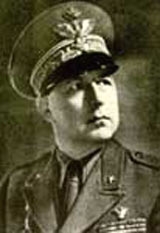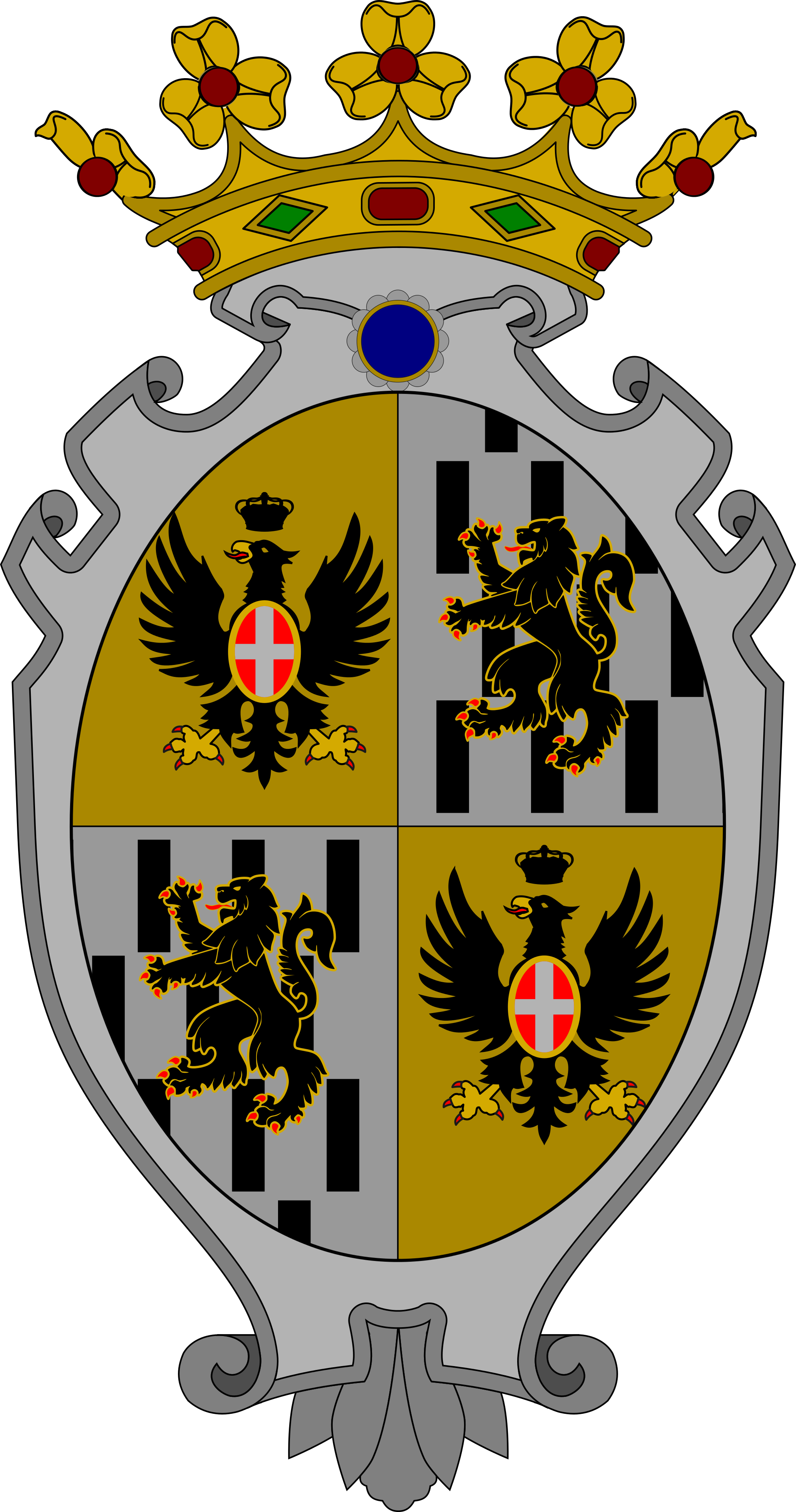|
Luigi Gherzi
Luigi Edoardo Alfredo Gherzi ( Lu Monferrato, 27 September 1889 – Kefalonia, 22 September 1943) was an Italian general during World War II. Biography He was born in Lu Monferrato, province of Alessandria, on 27 September 1889, the son of farmer Alberto Gherziand Savina Borghino. After graduating as an accountant, he enlisted in the Royal Italian Army, taking part in the Italo-Turkish War and then in the First World War. In the late 1930s, with the rank of colonel, he assumed command of the 68th Infantry Regiment "Palermo", stationed in Novara, which in 1939 was renamed 68th Infantry Regiment "Legnano", part of the 58th Infantry Division "Legnano", and transferred to Legnano. At the outbreak of World War II, the regiment was kept in reserved on the western front, and in March 1941, it left for the Greek front, where it fought under Gherzi's command until May of the same year. Later in 1941, he assumed the position of Chief of Staff of the 26th Infantry Division "Assiet ... [...More Info...] [...Related Items...] OR: [Wikipedia] [Google] [Baidu] |
Lu Monferrato
Lu (, ) is a ''comune'' (municipality) in the Province of Alessandria in the Italian region Piedmont, located about east of Turin and about northwest of Alessandria Alessandria (; pms, Lissandria ) is a city and ''comune'' in Piedmont, Italy, and the capital of the Province of Alessandria. The city is sited on the alluvial plain between the Tanaro and the Bormida rivers, about east of Turin. Alessandria .... References External links Official website Cities and towns in Piedmont {{Alessandria-geo-stub ... [...More Info...] [...Related Items...] OR: [Wikipedia] [Google] [Baidu] |
58th Infantry Division "Legnano"
The 58th Infantry Division "Legnano" ( it, 58ª Divisione di fanteria "Legnano") was an infantry division of the Royal Italian Army during World War II. The Legnano's predecessor division was formed on 8 February 1934 in Milan and named for the medieval Battle of Legnano. On 24 May 1939 the division split to form the 6th Infantry Division "Cuneo" and the 58th Infantry Division "Legnano". After the announcement of the Armistice of Cassibile the Legnano resisted the invading German forces. The division's staff and 67th Infantry Regiment "Legnano" were used to form the first unit of the Italian Co-belligerent Army, which fought on the allied side in the Italian campaign. On 17 February 1944 the division's last units joined other commands and the division was officially dissolved. History The division's lineage begins with the Brigade "Palermo" established in Turin on 1 August 1862 with the 67th and 68th infantry regiments. World War I The brigade fought on the Italian fron ... [...More Info...] [...Related Items...] OR: [Wikipedia] [Google] [Baidu] |
Antonio Gandin
Antonio Gandin (13 May 1891 – 24 September 1943) was an Italian general, who was killed in Kefalonia in September 1943 during the Massacre of the Acqui Division. Biography Antonio Gandin was born in Avezzano in 1891, son of Pietro, prefect of the kingdom and of Colomba Desideri. Coming from a family originally from Bagnaia (a hamlet of Viterbo) with strong military traditions, (his brother Aldo, born in 1895, was also a general in the Royal Army, while his brother Vittorio was an engineer. His nephew Ugo, son of the sister Lucia was a well-known magistrate), Gandin had a degree in literature, attended the Royal Military Academy of Modena and obtained the rank of second lieutenant in 1910. He participated in the Italian-Turkish war on the Libyan front between 1911 and 1912; he became a lieutenant and fought the war against the Austro-Hungarian Empire in the ranks of the 136th regiment, earning a silver medal, a bronze medal and two war crosses for military valor. After the en ... [...More Info...] [...Related Items...] OR: [Wikipedia] [Google] [Baidu] |
Argostoli
Argostoli ( el, Αργοστόλι, Katharevousa: Ἀργοστόλιον) is a town and a municipality on the island of Kefalonia, Ionian Islands, Greece. Since the 2019 local government reform it is one of the three municipalities on the island. It has been the capital and administrative centre of Kefalonia since 1757, following a population shift down from the old capital of Agios Georgios (also known as Kastro) to take advantage of the trading opportunities provided by the sheltered bay upon which Argostoli sits. Argostoli developed into one of the busiest ports in Greece, leading to prosperity and growth. The municipality has an area of 377.0 km2 and the municipal unit (the pre-2010 municipality) has an area of 157.670 km2. The 2011 census recorded a population of 10,633 in the Argostoli municipal unit, and 23,499 in the municipality in its post-2019 extension. Its largest towns are Argostóli (pop. 9,748), Razata (507), Dilináta (496) and Kompothekráta (449). Urb ... [...More Info...] [...Related Items...] OR: [Wikipedia] [Google] [Baidu] |
Armistice Of Cassibile
The Armistice of Cassibile was an armistice signed on 3 September 1943 and made public on 8 September between the Kingdom of Italy and the Allies during World War II. It was signed by Major General Walter Bedell Smith for the Allies and Brigade General Giuseppe Castellano for Italy at a conference of generals from both sides in an Allied military camp at Cassibile, in Sicily, which had recently been occupied by the Allies. The armistice was approved by both the Italian King Victor Emmanuel III and Marshal Badoglio, the Prime Minister of Italy at the time. Germany moved rapidly by freeing Benito Mussolini (12 September) and attacking Italian forces in Italy (8–19 September), southern France and the Balkans. The Italian forces were quickly defeated, and most of Italy was occupied by German troops, who established a puppet state, the Italian Social Republic. The king, the Italian government, and most of the navy escaped to territories occupied by the Allies. Backgroun ... [...More Info...] [...Related Items...] OR: [Wikipedia] [Google] [Baidu] |
33rd Infantry Division "Acqui"
The 33rd Infantry Division "Acqui" ( it, 33ª Divisione di fanteria "Acqui") was an infantry division of the Royal Italian Army during World War II. The Acqui was classified as a mountain infantry division, which meant that its artillery was moved by pack mules instead of the horse-drawn carriages of line infantry divisions. Italy's real mountain warfare divisions were the six alpine divisions manned by Alpini mountain troops. The division was named for the city of Acqui. The division is notable for having been massacred with remarkable cruelty after surrendering to the Germans on 21 September 1943. The main detachments of the Acqui division in the islands of Cephalonia and Corfu were officially dissolved 25 September 1943. History The division's lineage begins with the Brigade "Acqui" established on 21 December 1821, which on 25 October 1831 split to form the 1st and 2nd infantry regiments under the brigade's command. On 4 May 1839, the two regiments were re-numbered as 17th a ... [...More Info...] [...Related Items...] OR: [Wikipedia] [Google] [Baidu] |
Bartolomeo Pedrotti
Bartolomeo or Bartolommeo is a masculine Italian given name, the Italian equivalent of Bartholomew. Its diminutive form is Baccio. Notable people with the name include: * Abramo Bartolommeo Massalongo (1824–1860), Italian paleobotanist and lichenologist * Bartolomeo Aimo (1889–1970), Italian professional bicycle road racer * Bartolomeo Altomonte, a.k.a. Bartholomäus Hohenberg (1694–1783), Austrian baroque painter * Bartolomeo Amico a.k.a. Bartholomeus Amicus (1562–1649), Jesuit priest, teacher and writer who spent his adult life in Naples * Bartolomeo Ammanati (1511–1592), Florentine architect and sculptor * Bartolomeo Avanzini (1608–1658), Italian architect of the Baroque period * Bartolomeo Bacilieri (1842–1923), Italian cardinal, Bishop of Verona 1900–1923 * Bartolommeo Bandinelli (1488–1560), Italian sculptor * Bartolomeo Barbarino (c. 1568–c. 1617 or later), Italian composer and singer of the early Baroque era * Bartolomeo Bassi (early 1600s-1640s), G ... [...More Info...] [...Related Items...] OR: [Wikipedia] [Google] [Baidu] |
Yugoslav Partisans
The Yugoslav Partisans,Serbo-Croatian, Macedonian, Slovene: , or the National Liberation Army, sh-Latn-Cyrl, Narodnooslobodilačka vojska (NOV), Народноослободилачка војска (НОВ); mk, Народноослободителна војска (НОВ); sl, Narodnoosvobodilna vojska (NOV) officially the National Liberation Army and Partisan Detachments of Yugoslavia, sh-Latn-Cyrl, Narodnooslobodilačka vojska i partizanski odredi Jugoslavije (NOV i POJ), Народноослободилачка војска и партизански одреди Југославије (НОВ и ПОЈ); mk, Народноослободителна војска и партизански одреди на Југославија (НОВ и ПОЈ); sl, Narodnoosvobodilna vojska in partizanski odredi Jugoslavije (NOV in POJ) was the communist-led anti-fascist resistance to the Axis powers (chiefly Germany) in occupied Yugoslavia during World War II. Led by Josip Broz T ... [...More Info...] [...Related Items...] OR: [Wikipedia] [Google] [Baidu] |
Herzegovina
Herzegovina ( or ; sh-Latn-Cyrl, Hercegovina, separator=" / ", Херцеговина, ) is the southern and smaller of two main geographical region of Bosnia and Herzegovina, the other being Bosnia. It has never had strictly defined geographical or cultural-historical borders, nor has it ever been defined as an administrative whole in the geopolitical and economic subdivision of Bosnia and Herzegovina. Bosnia, the larger of the two regions, lies to the north of Herzegovina; the Croatian region of Dalmatia lies to the southwest; the Montenegrin region of Old Herzegovina lies to the southeast. The land area of Herzegovina is around , or around 23–24% of the country. The largest city is Mostar, in the center of the region. Other large settlements include Trebinje, Široki Brijeg, Ljubuški, Čapljina, Konjic and Posušje. Etymology The name (or ''Herzegovina'' in English) stems from German (the German term for a duke; sh, vojvoda), and means a land ruled and/or owned ... [...More Info...] [...Related Items...] OR: [Wikipedia] [Google] [Baidu] |
Yugoslavia
Yugoslavia (; sh-Latn-Cyrl, separator=" / ", Jugoslavija, Југославија ; sl, Jugoslavija ; mk, Југославија ;; rup, Iugoslavia; hu, Jugoszlávia; rue, label=Pannonian Rusyn, Югославия, translit=Juhoslavija; sk, Juhoslávia; ro, Iugoslavia; cs, Jugoslávie; it, Iugoslavia; tr, Yugoslavya; bg, Югославия, Yugoslaviya ) was a country in Southeast Europe and Central Europe for most of the 20th century. It came into existence after World War I in 1918 under the name of the ''Kingdom of Serbs, Croats and Slovenes'' by the merger of the provisional State of Slovenes, Croats and Serbs (which was formed from territories of the former Austria-Hungary) with the Kingdom of Serbia, and constituted the first union of the South Slavic people as a sovereign state, following centuries in which the region had been part of the Ottoman Empire and Austria-Hungary. Peter I of Serbia was its first sovereign. The kingdom gained international recog ... [...More Info...] [...Related Items...] OR: [Wikipedia] [Google] [Baidu] |
154th Infantry Division "Murge"
The 154th Infantry Division "Murge" ( it, 154ª Divisione di fanteria "Murge") was an infantry Division (military), division of the Royal Italian Army during World War II. The Murge was formed on 1 December 1942 and named for the Altopiano delle Murge, Murge plateau in Apulia. The Murge was classified as an Military occupation, occupation infantry division, which meant that the division's artillery regiment consisted of two artillery groups instead of the three artillery groups of line infantry divisions and that the divisional mortar battalion was replaced by a divisional machine gun battalion. The division was sent to Herzegovina as an occupation force, where it took part in anti-Yugoslav Partisan, partisan operations. It took part in the Battle of the Sutjeska and then had to be withdrawn after suffering heavy losses. It was disbanded in September 1943, following the announcement of the Armistice of Cassibile. History World War I The division's lineage begins with the Brigade ... [...More Info...] [...Related Items...] OR: [Wikipedia] [Google] [Baidu] |






